Analysis of Saccharides by HILIC
Analysis of Saccharides by HILIC using TSKgel® NH2-100 Columns
TOSOH
Application n°a15l47a
Introduction
Saccharides are fundametal substances that express various bioactivities and may exist independently or form complexes with proteins or lipids. They can be classified into monosaccharides, disaccharides, oligosaccharides, polysaccharides etc., based upon the degrees of polymerization and condensation. Sugar alcohols are a class of polyols. A polyol is an alcohol containing multiple hydroxyl groups. Sugar alcohols are commonly added to foods since they are of lower caloric content than the corresponding sugars. The analysis of saccharides and sugar alcohols provides valuable information for the medical research, food industries and regulatory agencies.
In the past various analytical techniques have been used to analyse saccharides, including all modes of high performance liquid chromatography (HPLC). Normal phase chromatography, in tandem with a differential refractometer as a detector, has long been used for the analysis of saccharides, as it provides good selectivity with relatively short analysis times. Hydrophilic interaction liquid chromatography (HILIC) selectively retains saccharides and polyhydric alcohols, such as sugar alcohols, while most of the substances with low polarity, as well as monohydric alcohols, elute in or very close to the void volume of the column.
We report the successful analysis of different kinds of saccharides and sugar alcohols using a TSKgel NH2-100 HILIC HPLC column. TSKgel NH2-100 columns are packed with 3 µm silica particles containing 100 Å pores. A novel bonding strategy was adopted to improve chemical stability of the bonded phase. First the silica is reacted with a trimethylsilane endcapping reagent at a low stoichiometric ratio, before reacting residual and accessible silanol groups with trifunctional alkylaminosilane reagent.
The resulting bonded phase provides a better safeguard against hydrolysis of the underlying silica. TSKgel NH2-100 columns are unique in that the bonded phase ligand not only, as expected, has a terminal primary amino group, but that the spacer also incorporates secondary as well as tertiary amino groups (see Figure 1). TSKgel NH2-100 columns are well suited for the analysis of all types of hydrophilic compounds, including saccharides and sugar alcohols.
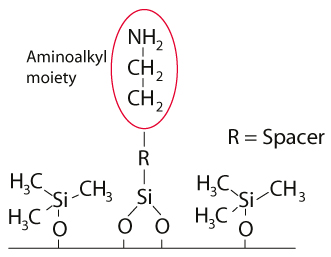
FIGURE 1_structure of tskgel NH2-100
Experimental conditions
LC System: HP-1100 HPLC with Chemstation (ver B.03.01)
Column: TSKgel NH2-100, 3 µm, 2.0 mm ID x 5 cm L
Mobile phase (Isocratic): 80% ACN in H20
Flow rate: 0.2 mL/min; Detection: RI
Temperature: 50°C; Injection vol.: 2 µL
The following commercially available compounds were used to prepare standard solutions: Sucrose (Fisher S2-500); Mannitol (Sigma M-4125, Lot 22K0111)
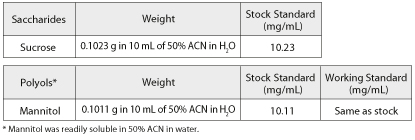
TABLE 1_Preparation of standards
All the standards and samples were filtered through a 0.45 µm PVDF filter (Gelman) before injecting onto the column. High purity chemicals and HPLC grade solvents were used for the preparation of stock standards, samples and mobile phases.
Results and Discussion
The symmetry and efficiency of the eluted sucrose standard, a disaccharide, from the TSKgel NH2-100 column is shown in Figure 2.
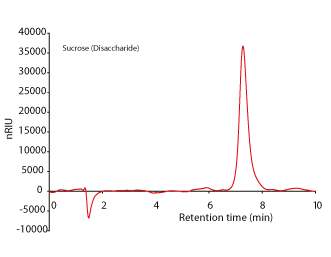
FIGURE 2_Analysis of sucrose standard_Column: TSKgel NH2-100, 3 µm, 2.0 mm ID x 5 cm L; Mobile phase: 80% ACN in H2O; Flow rate: 0.2 mL/min; Detection: RI; Temperature: 50°C; Injection Vol.: 2 µL
To determine the suitability of the system and method, three consecutive injections of sucrose were loaded onto the TSKgel NH2-100 column. The study yielded a very consistent result across all peak parameters (see Table 2). This column shows very high reproducibility for the analysis of sucrose.
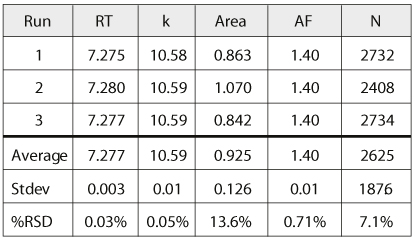
TABLE 2_System suitability study results - sucrose analys
Mannitol, a sugar alcohol, was successfully analyzed on a TSKgel NH2-100 column within five minutes (Figure 3). As in the case of sucrose, the analysis of mannitol could be reproduced with a high degree of consistency (Table 3).
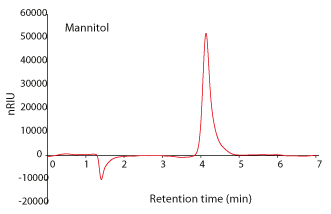

FIGURE 3_Analysis of mannitol standard_Column: TSKgel NH2-100, 3 µm, 2.0 mm ID x 5 cm L; Mobile phase: 80% ACN in H20; Flow rate: 0.2 mL/min; Detection: RI; Temperature: 50°C; Injection vol.: 2 µL
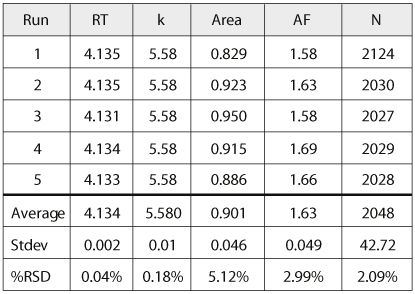
TABLE 3_System suitability study results - Mannitol analys
Conclusions
This study shows that a TSKgel NH2-100 column is suitable for the analysis of sucrose, a disaccharide, and mannitol, a sugar alcohol. Both standards separated on this column with good symmetry and efficiency. System suitability studies show that the analyses of sucrose and mannitol can be reproduced with very low % RSD in peak parameters using the TSKgel NH2-100 column.

TOSOH
Application n°a15l47a
Introduction
Saccharides are fundametal substances that express various bioactivities and may exist independently or form complexes with proteins or lipids. They can be classified into monosaccharides, disaccharides, oligosaccharides, polysaccharides etc., based upon the degrees of polymerization and condensation. Sugar alcohols are a class of polyols. A polyol is an alcohol containing multiple hydroxyl groups. Sugar alcohols are commonly added to foods since they are of lower caloric content than the corresponding sugars. The analysis of saccharides and sugar alcohols provides valuable information for the medical research, food industries and regulatory agencies.
In the past various analytical techniques have been used to analyse saccharides, including all modes of high performance liquid chromatography (HPLC). Normal phase chromatography, in tandem with a differential refractometer as a detector, has long been used for the analysis of saccharides, as it provides good selectivity with relatively short analysis times. Hydrophilic interaction liquid chromatography (HILIC) selectively retains saccharides and polyhydric alcohols, such as sugar alcohols, while most of the substances with low polarity, as well as monohydric alcohols, elute in or very close to the void volume of the column.
We report the successful analysis of different kinds of saccharides and sugar alcohols using a TSKgel NH2-100 HILIC HPLC column. TSKgel NH2-100 columns are packed with 3 µm silica particles containing 100 Å pores. A novel bonding strategy was adopted to improve chemical stability of the bonded phase. First the silica is reacted with a trimethylsilane endcapping reagent at a low stoichiometric ratio, before reacting residual and accessible silanol groups with trifunctional alkylaminosilane reagent.
The resulting bonded phase provides a better safeguard against hydrolysis of the underlying silica. TSKgel NH2-100 columns are unique in that the bonded phase ligand not only, as expected, has a terminal primary amino group, but that the spacer also incorporates secondary as well as tertiary amino groups (see Figure 1). TSKgel NH2-100 columns are well suited for the analysis of all types of hydrophilic compounds, including saccharides and sugar alcohols.

FIGURE 1_structure of tskgel NH2-100
Experimental conditions
LC System: HP-1100 HPLC with Chemstation (ver B.03.01)
Column: TSKgel NH2-100, 3 µm, 2.0 mm ID x 5 cm L
Mobile phase (Isocratic): 80% ACN in H20
Flow rate: 0.2 mL/min; Detection: RI
Temperature: 50°C; Injection vol.: 2 µL
The following commercially available compounds were used to prepare standard solutions: Sucrose (Fisher S2-500); Mannitol (Sigma M-4125, Lot 22K0111)

TABLE 1_Preparation of standards
All the standards and samples were filtered through a 0.45 µm PVDF filter (Gelman) before injecting onto the column. High purity chemicals and HPLC grade solvents were used for the preparation of stock standards, samples and mobile phases.
Results and Discussion
The symmetry and efficiency of the eluted sucrose standard, a disaccharide, from the TSKgel NH2-100 column is shown in Figure 2.

FIGURE 2_Analysis of sucrose standard_Column: TSKgel NH2-100, 3 µm, 2.0 mm ID x 5 cm L; Mobile phase: 80% ACN in H2O; Flow rate: 0.2 mL/min; Detection: RI; Temperature: 50°C; Injection Vol.: 2 µL
To determine the suitability of the system and method, three consecutive injections of sucrose were loaded onto the TSKgel NH2-100 column. The study yielded a very consistent result across all peak parameters (see Table 2). This column shows very high reproducibility for the analysis of sucrose.

TABLE 2_System suitability study results - sucrose analys
Mannitol, a sugar alcohol, was successfully analyzed on a TSKgel NH2-100 column within five minutes (Figure 3). As in the case of sucrose, the analysis of mannitol could be reproduced with a high degree of consistency (Table 3).


FIGURE 3_Analysis of mannitol standard_Column: TSKgel NH2-100, 3 µm, 2.0 mm ID x 5 cm L; Mobile phase: 80% ACN in H20; Flow rate: 0.2 mL/min; Detection: RI; Temperature: 50°C; Injection vol.: 2 µL

TABLE 3_System suitability study results - Mannitol analys
Conclusions
This study shows that a TSKgel NH2-100 column is suitable for the analysis of sucrose, a disaccharide, and mannitol, a sugar alcohol. Both standards separated on this column with good symmetry and efficiency. System suitability studies show that the analyses of sucrose and mannitol can be reproduced with very low % RSD in peak parameters using the TSKgel NH2-100 column.
